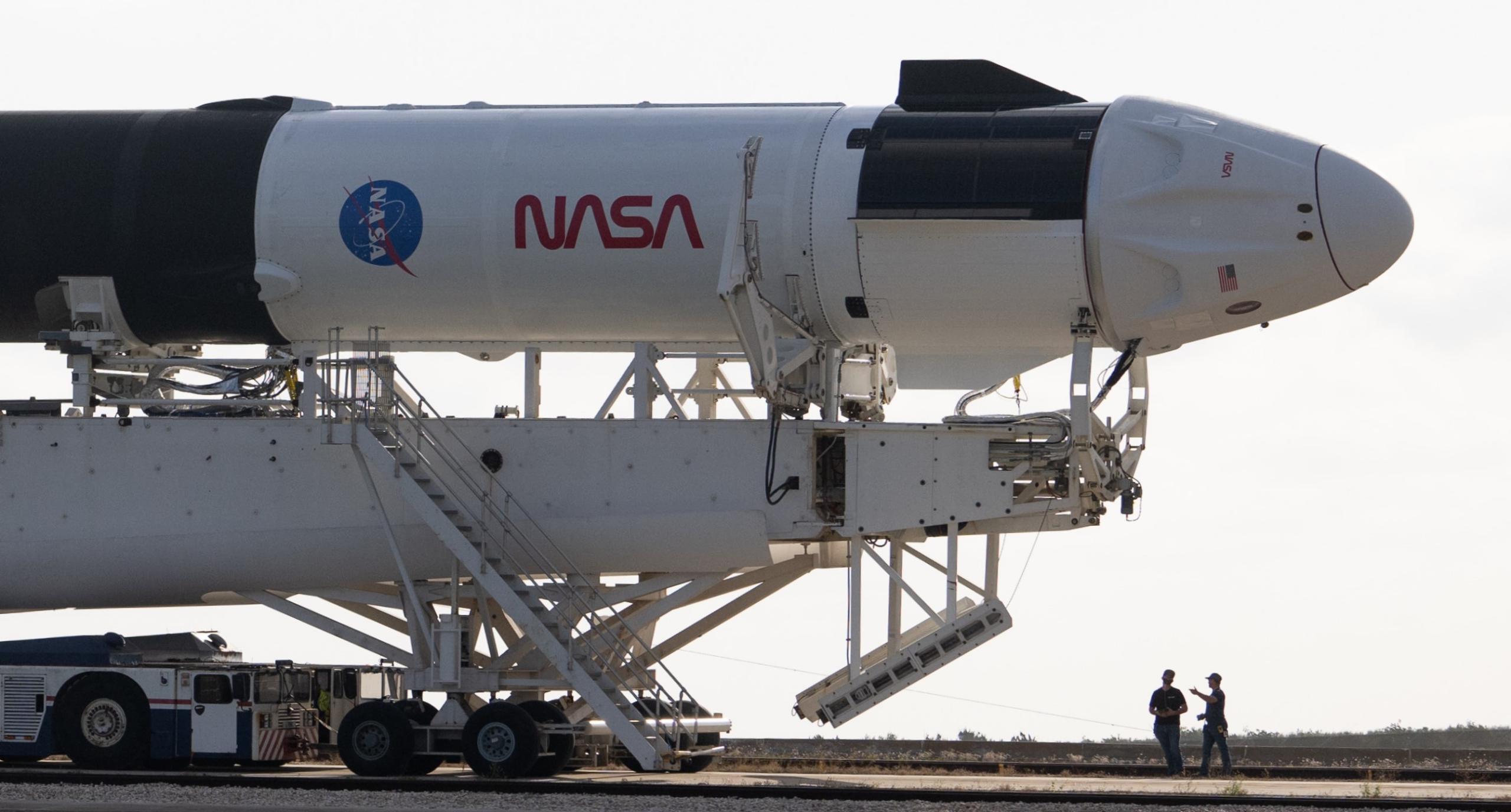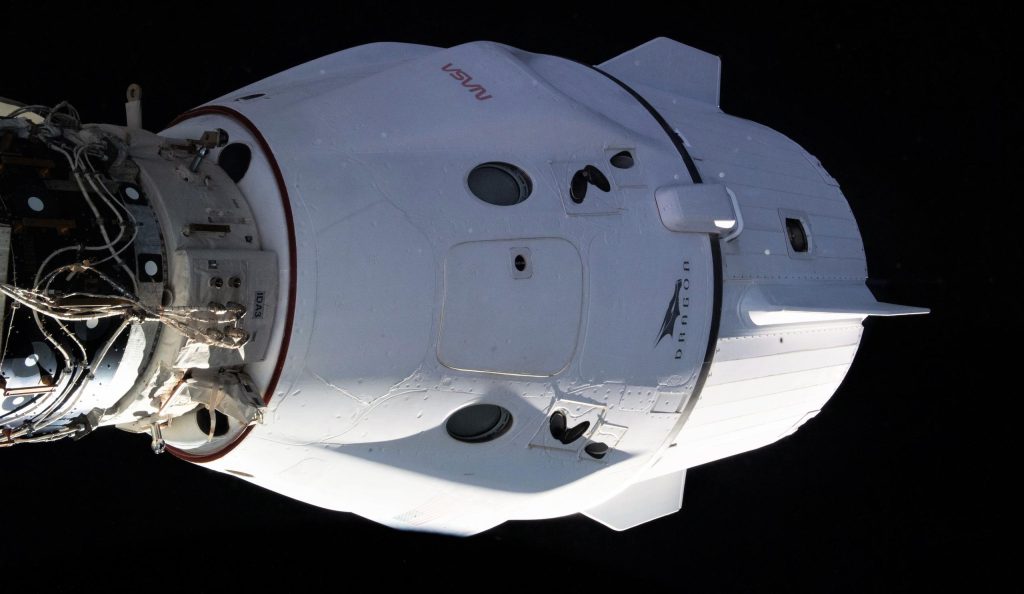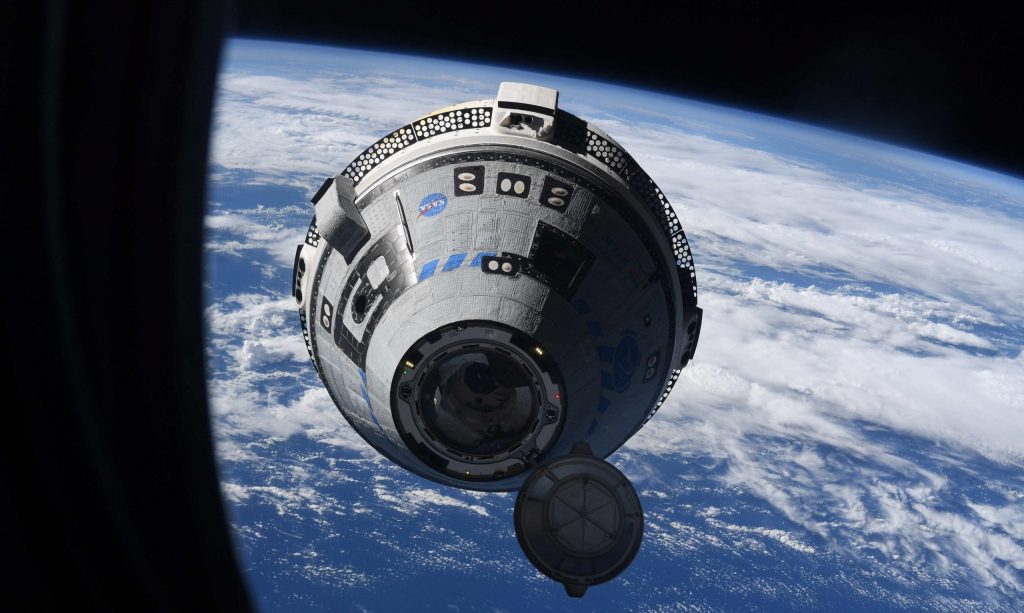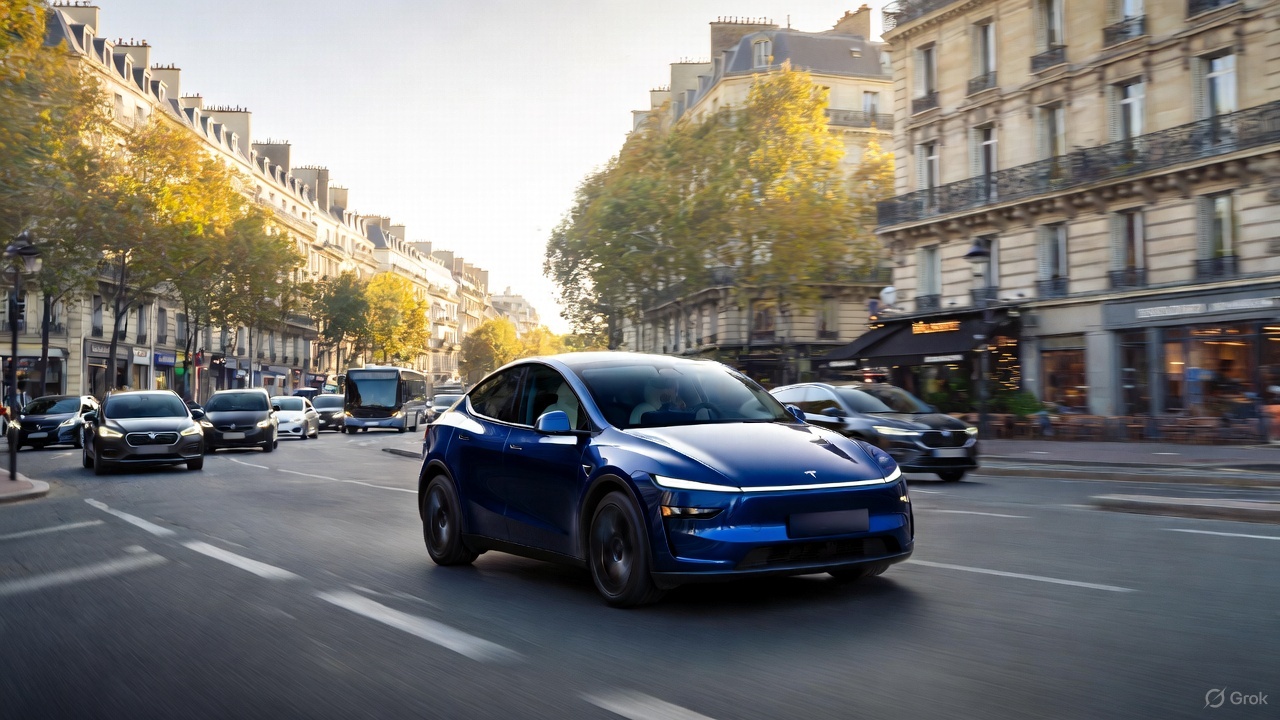

News
NASA awards SpaceX five more Dragon astronaut launch contracts
NASA has finalized plans to purchase another five Crew Dragon launches from SpaceX, securing its astronauts access to the International Space Station (ISS) through 2030.
The award comes three months after NASA issued a notice of intent to purchase five additional missions from SpaceX. The space agency signed a different contract for three more Crew Dragon launches just three months before the latest order, meaning that NASA has now purchased eight new Crew Dragon launches from SpaceX in six months – doubling the spacecraft’s future launch manifest in the process.
August 31st’s order adds Crew missions 10 through 14 to Crew Dragon’s roster and brings its total number of planned operational NASA astronaut launches to 14. NASA says the five extra missions will cost $1.44 billion and raise the total value of SpaceX’s Crew Dragon CCtCap contract to $4.93 billion.
Factoring in a sum of approximately $2.74 billion that funded development and three test launches, NASA will ultimately pay an average of $328 million for each of 15 productive Crew Dragon astronaut launches (including Demo-2, the spacecraft’s first crewed test flight). Assuming four astronauts fly on each operational launch, the average price per astronaut launched through 2030 will be $85 million.
With its latest contract, NASA will beat that average and pay $288 million per launch ($72 million per astronaut). Crew-10 through Crew-14 will likely occur in the late 2020s, meaning that the space agency may be saving even more money than is immediately obvious. Assuming an inflation rate of 2.5% over the next eight years, $288 million today could be worth around $235 million in 2030. SpaceX is not paid until after its services are rendered.

NASA’s decision to award SpaceX eight new Crew Dragon launch contracts in 2022 is a major blow to its second Commercial Crew provider, Boeing, which has received zero additional orders. It also emphasizes just how good of a deal the agency got with SpaceX. Once said to be “well positioned to fly [its] first crew in early 2020,” Boeing’s Starliner crew capsule finally completed its first (mostly) successful uncrewed test flight in May 2022. Boeing and NASA are now working towards February 2023 for the spacecraft’s first crewed test flight, delaying Starliner’s first operational astronaut launch until late 2023 at the earliest.
Starliner still has only six operational launch contracts, which date back to ta guarantee in the original 2014 CCtCap awards that promised 2-6 operational launch contracts per provider. Thanks to NASA’s fixed-price contract with Boeing, the agency won’t have to cover the almost $700 million that years of Starliner delays and a test flight do-over have cost the company to date, but taxpayers will still end up paying a total of $4.49 billion – $748 million per operational Boeing astronaut launch.

Even using iffy Boeing calculus that claims NASA will get five seats of value per launch by adding an extra astronaut or cargo, the space agency would end up paying $150 million per astronaut through 2030. If only four astronauts launch on each Starliner, the average price per seat rises to $187 million.
Unless Boeing is able to find a commercial customer willing to burn tens or hundreds of millions of dollars to avoid launching private astronauts with SpaceX, it may never recoup the losses it has incurred developing Starliner. Worse, without Boeing paying even more out of pocket to certify Starliner to launch on a different rocket, the spacecraft will find itself without a certified rocket after its sixth operational launch.
Meanwhile, on top of eight new NASA contracts, Crew Dragon has already supported two private astronaut launches and SpaceX has contracts for five more private missions through 2024. Put simply, thanks in large part to the void created by Boeing’s surprising shortcomings, SpaceX practically owns the western market for crewed orbital spaceflight and will likely continue to dominate it throughout the 2020s.

News
Man credits Grok AI with saving his life after ER missed near-ruptured appendix
The AI flagged some of the man’s symptoms and urged him to return to the ER immediately and demand a CT scan.

A 49-year-old man has stated that xAI’s Grok ended up saving his life when the large language model identified a near-ruptured appendix that his first ER visit dismissed as acid reflux.
After being sent home from the ER, the man asked Grok to analyze his symptoms. The AI flagged some of the man’s symptoms and urged him to return immediately and demand a CT scan. The scan confirmed that something far worse than acid reflux was indeed going on.
Grok spotted what a doctor missed
In a post on Reddit, u/Tykjen noted that for 24 hours straight, he had a constant “razor-blade-level” abdominal pain that forced him into a fetal position. He had no fever or visible signs. He went to the ER, where a doctor pressed his soft belly, prescribed acid blockers, and sent him home.
The acid blockers didn’t work, and the man’s pain remained intense. He then decided to open a year-long chat he had with Grok and listed every detail that he was experiencing. The AI responded quickly. “Grok immediately flagged perforated ulcer or atypical appendicitis, told me the exact red-flag pattern I was describing, and basically said “go back right now and ask for a CT,” the man wrote in his post.
He copied Grok’s reasoning, returned to the ER, and insisted on the scan. The CT scan ultimately showed an inflamed appendix on the verge of rupture. Six hours later, the appendix was out. The man said the pain has completely vanished, and he woke up laughing under anesthesia. He was discharged the next day.
How a late-night conversation with Grok got me to demand the CT scan that saved my life from a ruptured appendix (December 2025)
byu/Tykjen ingrok
AI doctors could very well be welcomed
In the replies to his Reddit post, u/Tykjen further explained that he specifically avoided telling doctors that Grok, an AI, suggested he get a CT scan. “I did not tell them on the second visit that Grok recommended the CT scan. I had to lie. I told them my sister who’s a nurse told me to ask for the scan,” the man wrote.
One commenter noted that the use of AI in medicine will likely be welcomed, stating that “If AI could take doctors’ jobs one day, I will be happy. Doctors just don’t care anymore. It’s all a paycheck.” The Redditor replied with, “Sadly yes. That is what it felt like after the first visit. And the following night could have been my last.”
Elon Musk has been very optimistic about the potential of robots like Tesla Optimus in the medical field. Provided that they are able to achieve human-level articulation in their hands, and Tesla is able to bring down their cost through mass manufacturing, the era of AI-powered medical care could very well be closer than expected.
News
Tesla expands Model 3 lineup in Europe with most affordable variant yet
The Model 3 Standard still delivers more than 300 miles of range, potentially making it an attractive option for budget-conscious buyers.

Tesla has introduced a lower-priced Model 3 variant in Europe, expanding the lineup just two months after the vehicle’s U.S. debut. The Model 3 Standard still delivers more than 300 miles (480 km) of range, potentially making it an attractive option for budget-conscious buyers.
Tesla’s pricing strategy
The Model 3 Standard arrives as Tesla contends with declining registrations in several countries across Europe, where sales have not fully offset shifting consumer preferences. Many buyers have turned to options such as Volkswagen’s ID.3 and BYD’s Atto 3, both of which have benefited from aggressive pricing.
By removing select premium finishes and features, Tesla positioned the new Model 3 Standard as an “ultra-low cost of ownership” option of its all-electric sedan. Pricing comes in at €37,970 in Germany, NOK 330,056 in Norway, and SEK 449,990 in Sweden, depending on market. This places the Model 3 Standard well below the “premium” Model 3 trim, which starts at €45,970 in Germany.
Deliveries for the Standard model are expected to begin in the first quarter of 2026, giving Tesla an entry-level foothold in a segment that’s increasingly defined by sub-€40,000 offerings.
Tesla’s affordable vehicle push
The low-cost Model 3 follows October’s launch of a similarly positioned Model Y variant, signaling a broader shift in Tesla’s product strategy. While CEO Elon Musk has moved the company toward AI-driven initiatives such as robotaxis and humanoid robots, lower-priced vehicles remain necessary to support the company’s revenue in the near term.
Reports have indicated that Tesla previously abandoned plans for an all-new $25,000 EV, with the company opting to create cheaper versions of existing platforms instead. Analysts have flagged possible cannibalization of higher-margin models, but the move aims to counter an influx of aggressively priced entrants from China and Europe, many of which sell below $30,000. With the new Model 3 Standard, Tesla is reinforcing its volume strategy in Europe’s increasingly competitive EV landscape.
News
Tesla FSD (Supervised) stuns Germany’s biggest car magazine
FSD Supervised recognized construction zones, braked early for pedestrians, and yielded politely on narrow streets.

Tesla’s upcoming FSD Supervised system, set for a European debut pending regulatory approval, is showing notably refined behavior in real-world testing, including construction zones, pedestrian detection, and lane changes, as per a recent demonstration ride in Berlin.
While the system still required driver oversight, its smooth braking, steering, and decision-making illustrated how far Tesla’s driver-assistance technology has advanced ahead of a potential 2026 rollout.
FSD’s maturity in dense city driving
During the Berlin test ride with Auto Bild, Germany’s largest automotive publication, a Tesla Model 3 running FSD handled complex traffic with minimal intervention, autonomously managing braking, acceleration, steering, and overtaking up to 140 km/h. It recognized construction zones, braked early for pedestrians, and yielded politely on narrow streets.
Only one manual override was required when the system misread a converted one-way route, an example, Tesla stated, of the continuous learning baked into its vision-based architecture.
Robin Hornig of Auto Bild summed up his experience with FSD Supervised with a glowing review of the system. As per the reporter, FSD Supervised already exceeds humans with its all-around vision. “Tesla FSD Supervised sees more than I do. It doesn’t get distracted and never gets tired. I like to think I’m a good driver, but I can’t match this system’s all-around vision. It’s at its best when both work together: my experience and the Tesla’s constant attention,” the journalist wrote.
Tesla FSD in Europe
FSD Supervised is still a driver-assistance system rather than autonomous driving. Still, Auto Bild noted that Tesla’s 360-degree camera suite, constant monitoring, and high computing power mark a sizable leap from earlier iterations. Already active in the U.S., China, and several other regions, the system is currently navigating Europe’s approval pipeline. Tesla has applied for an exemption in the Netherlands, aiming to launch the feature through a free software update as early as February 2026.
What Tesla demonstrated in Berlin mirrors capabilities already common in China and the U.S., where rival automakers have rolled out hands-free or city-navigation systems. Europe, however, remains behind due to a stricter certification environment, though Tesla is currently hard at work pushing for FSD Supervised’s approval in several countries in the region.








